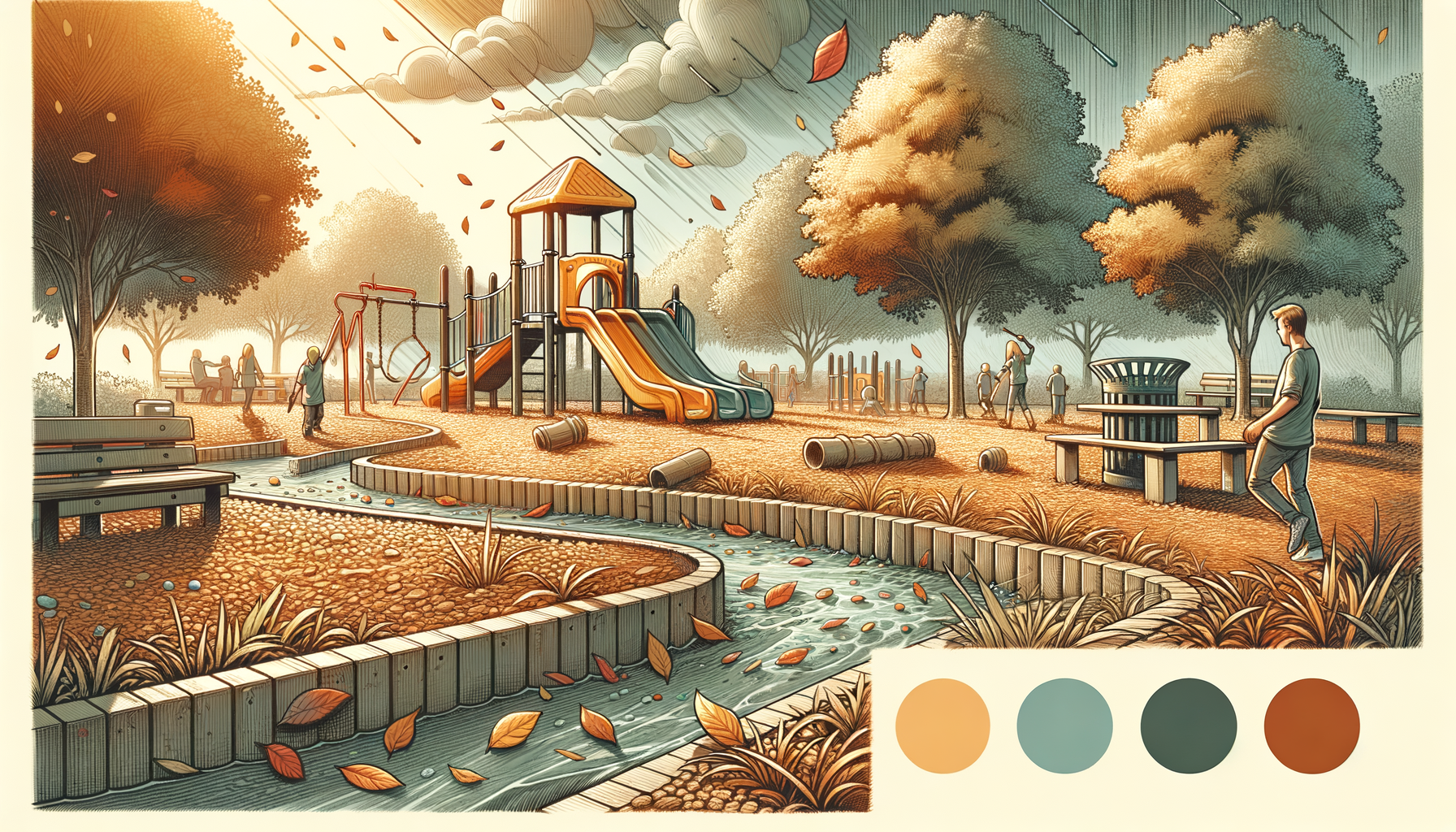
The Hidden Impact of Weather on Playground Mulch: Beyond Basic Maintenance
The Hidden Impact of Weather on Playground Mulch: Beyond Basic Maintenance
While most playground managers understand the basics of mulch maintenance, weather’s complex impact on safety surfacing often goes overlooked. From subtle compression during rainy seasons to displacement during dry spells, weather patterns play a crucial role in how playground surfacing performs throughout the year.
Understanding Weather’s Complex Role
Seasonal weather patterns affect playground mulch in ways that aren’t immediately visible to the naked eye. Heavy rains can cause material compaction, reducing the surfacing’s shock-absorbing capabilities. Meanwhile, extended dry periods can lead to material displacement and degradation, creating potential safety hazards that might not be apparent during routine visual inspections.
The Freeze-Thaw Effect
In regions experiencing significant temperature variations, the freeze-thaw cycle presents unique challenges for playground surfacing. As moisture within the mulch freezes and expands, it can create temporary hardening that affects impact absorption. When temperatures rise and the material thaws, this cycle can lead to unexpected displacement and compression patterns that require attention.
Summer Heat and Material Integrity
Extended exposure to intense summer heat affects engineered wood fiber in ways many managers don’t anticipate. The combination of UV radiation and high temperatures can accelerate the breakdown of organic materials, potentially leading to faster decomposition and more frequent replacement needs. Understanding these patterns helps in developing more effective maintenance schedules that account for seasonal variations.
Rainfall Patterns and Drainage
Proper drainage becomes particularly crucial during periods of heavy rainfall. Modern playground design must account for how water moves through the surfacing material. When drainage systems aren’t properly maintained or designed with local rainfall patterns in mind, water can pool beneath the surface, leading to long-term stability issues and potential safety concerns.
Wind and Material Migration
Strong winds can cause significant material displacement, particularly in areas with lighter surfacing materials or inadequate containment systems. This displacement isn’t just about aesthetics – it can create unsafe conditions where protective surfacing depth becomes inconsistent across the play area. Understanding local wind patterns helps in developing more effective containment strategies.
Adapting Maintenance to Weather Patterns
Modern playground management requires a more sophisticated approach to weather-based maintenance. Digital monitoring systems now allow for more precise tracking of weather impacts, helping managers anticipate when additional maintenance might be needed. This proactive approach helps maintain consistent safety standards while optimizing maintenance resources.
Planning for Regional Weather Challenges
Different regions face unique weather-related challenges that affect playground surfacing differently. Coastal areas might deal with salt air exposure, while arid regions face intense UV radiation and dry conditions. Understanding these regional factors is crucial for developing effective maintenance strategies that protect your investment and ensure consistent safety standards.
The Future of Weather-Smart Maintenance
As technology continues to evolve, playground maintenance is becoming increasingly sophisticated in how it addresses weather-related challenges. From automated monitoring systems to weather-resistant surfacing innovations, the industry is moving toward more intelligent solutions that help maintain optimal safety conditions regardless of weather patterns.